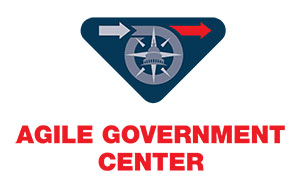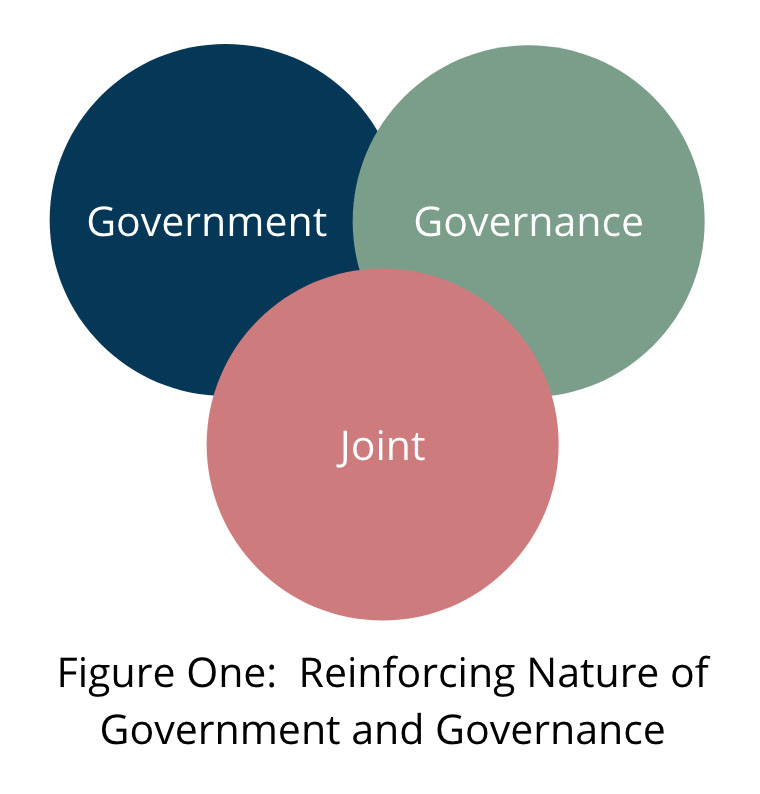
Agile Government and Agile Governance: We Need both

The new Agile Government Center (AGC) at the National Academy of Public Administration (NAPA) is off and running -- building a network of interested stakeholders in government, academia and industry; refining principles for how governments can apply agility in their daily activities; and developing case examples of government programs that demonstrate agile in action. As we expand this work, a key question has arisen around clarifying the distinction between agile “Government” focused on the people and institutions who implement programs and deliver services, and agile “Governance" focused on a broader network of stakeholders and processes that enable successful outcomes for government. This post explores an approach to the connection between the two.
Introduction
The term “Agile” comes from the world of software development, and its implementation in project management has led to greater success in technology implementation. Building on this success, good government entities around the world have adopted the “Agile” label to promote better government outcomes.
The Agile phenomenon is highlighted in an upcoming article in the Public Administration Review, "Agile: A New Way of Governing." Authors Professor Dr. Ines Mergel, Professor Andrew B. Whitford, and Professor Dr. Sukumar Ganapati write, “A quiet government transformation is already underway with practitioners who are investing heavily in working in agile environments and applying agile approaches from software development to other types of government problems.”
In this post, we explore two uses of Agile - Agile Government and Agile Governance. In actuality, Governance is twofold – internal Governance that supports service delivery, and external Governance of processes that involve actors outside of government who are significant stakeholders in delivering in the outcome of important actions. For simplicity, we will define the two as Agile Government (internally focused and involving government taking action to deliver services) and Agile Governance (externally focused and involving multiple parties beyond government officials, all jointly seeking positive outcomes).
Defining Agile Government and Agile Governance
The scope of Agile Government encompasses three functions: policy development, regulatory development, and program and policy implementation. These three functions combine to implement existing laws and regulations and provide value to the public.
“Governance,” as applied to public institutions, has a broader scope. The World Bank defines governance as, “The manner in which power is exercised in management of a country’s social and economic resources for development.” Because of its own remit, the Bank focuses on development. Any number of objectives such as the health and welfare of the population or the distribution of resources could be inserted in place of development.
The Organization for Economic Cooperation and Development and the World Economic Forum have both recognized the need for Agile Governance. Both organizations are developing “agile governance tools to share best practice, expand the use of these tools and push their boundaries.”
For this post, I suggest that “government” is the organization charged with executing laws and regulations that deliver services and information, and “governance” is the process of developing a broader view to assure that the public good is accomplished in arenas involving internal and external actors.
Mutual Reinforcement of Government and Governance
In practice, government and governance reinforce each other. Government provides people and tools that governance frames to achieve successful outcomes. For example, in the current coronavirus crisis, elements of government represented by public health departments at the federal, state and local levels provide guidance and service to the population using the resources that have been appropriated to them by various other units of government. This is a primary example of Agile Government. The AGC has produced a post describing how Agile Federalism could be used in times of crisis and gives some case examples of where it has been employed.
However, the challenge to managing the pandemic is broader than just allocating resources. It also involves Agile Governance as public and private officials determine who will exercise power to reopen economies and permit social activities once the pandemic has been contained. States can group together to make these decisions, with the federal government working toward a common governance model for the entire process – enabling a clear sense of direction for reopening society.
Although often difficult to tell where one begins and the other ends, or which one’s involvement is critical to mission performance, Governance lies more the realm of politically elected officials, while Government is more appropriately shared between civil servants and elected officials with executive powers.
Can Government and Governance Be Agile?
This question has been raised and answered in the affirmative for Government in the IBM Center for the Business of Government/NAPA Agile Government Center blog.
The question has not been answered for Agile Governance. As noted above, there are several organizations including the World Economic Forum and the Organization for Economic Cooperation and Development that are working on elements of Agile Governance.
Not every principle (please see our Agile Government principles) will be applicable to Governance, but some like Clarity of Mission, Speed, Persistence, Evidence Informed Solutions, and Diversity of Thought are all useful touch points for this external category of activity.
Conclusion
The mutually reinforcing nature of “government” and “governance” suggest that a common set of Agile Principles can form an important guide post for implementation of both. These principles can serve as a template or check list for action, and should lead to better outcomes for the public.




